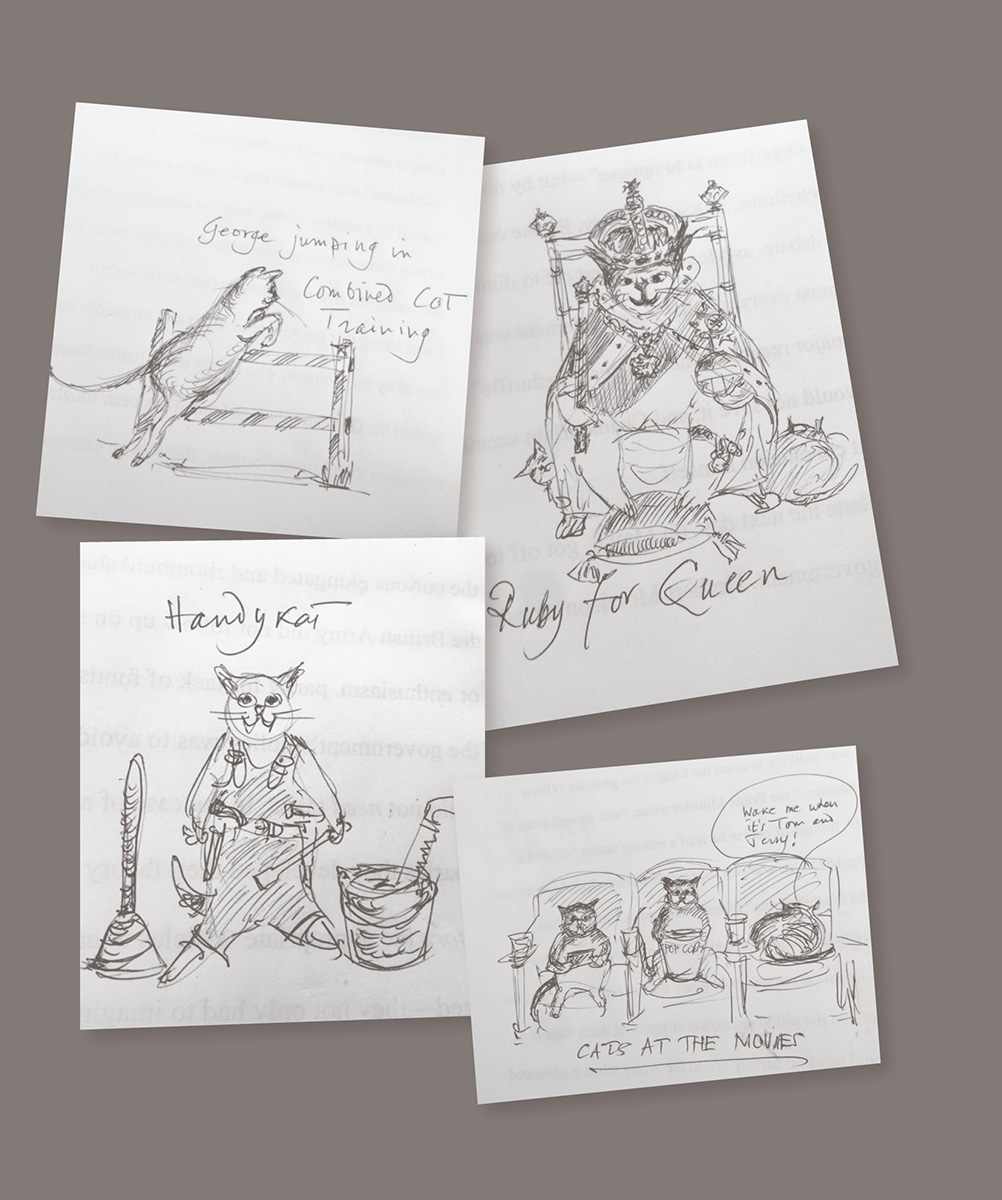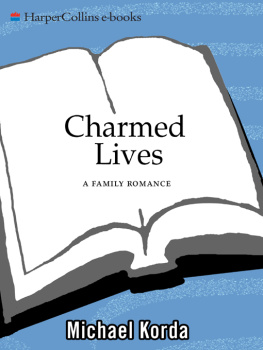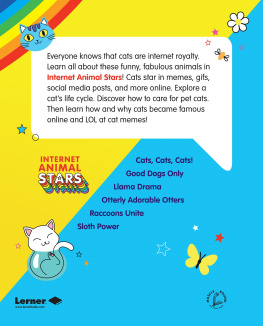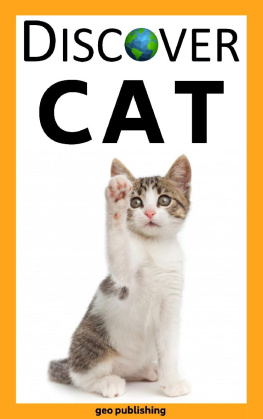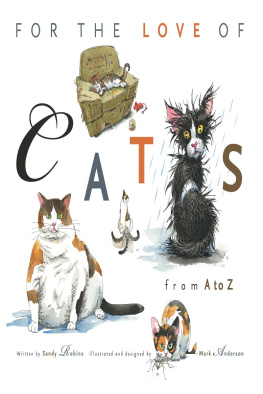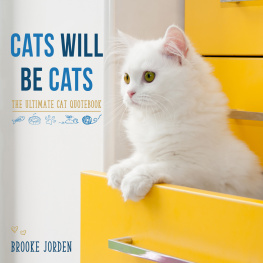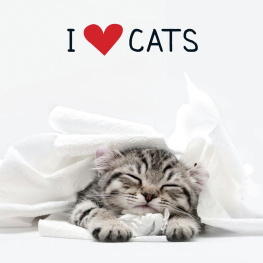Catnip
A Love Story
Michael Korda

Contents

I have been drawing most of my life, doodling away industriously when I was supposed to be listening, covering everything in front of meschoolbooks, notebooks, telephone pads, agendas for business meetings, paper place matswith drawings. Far from being praised for my skill as a draftsman, however, I was mostly criticized or punished for wasting my time doing drawings and not paying attention.
When I was a child I drew characters from my favorite nursery rhymes and childrens books. By the time I was in school, I drew airplanes, which fascinated me for years until I was drafted into the Royal Air Force and got my fill of them. Then I finally switched to horses, because they came to play a large part in my life. My wife, Margaret, and I met while riding on the bridle paths in New York Citys Central Park. I quickly became quite proficient at drawing horses, but since Margaret was first and foremost a cat lover, I added cats to my repertoire for birthday cards and anniversaries. Sometimes I even managed to combine the two, which isnt easy, given the difference in scale.



In the summer of 2016, a few months after Margaret was diagnosed with a malignant brain tumor, I started drawing a cat cartoon every day in the tack room of our barn, to take her mind off what was happening to her, and, if possible, to give her something to laugh or at least smile about. It had been from the beginning a significant part of our life together to ride every morning, and afterward we always had a cup of Dunkin Donuts coffee in the tack roommedium skim-milk cappuccino for me, small French vanilla with two creams and two sugars for Margaretwhile we cleaned our boots and enjoyed the air conditioning or the warmth, depending on the season. The tack room was Margarets domain, the center of what she did, and who she was.

The first few drawings came easily enough, but as the days went by I began to set a few rules in my mind about them. The first was that I would only use the things that were on hand in the tack room to work with: a couple of ballpoint pens and Magic Markers, and pages from discarded manuscripts of my books, scrap paper basically, on the blank side of which Margaret made notes to herself or wrote down telephone numbers. Bringing fancy drawing paper or proper pens and pencils to the tack room seemed contradictory to the whole spirit of the thing, which was supposed to be spontaneous, improvised and fun. For the same reason, I tried to do each drawing within five minutes, if possible threeif it took too long to do I feared they would lose the element of surprise, and would eventually become a chore. Some days I skipped altogether, either because we were in New York City for the day, or because I was sick, or because Margaret had to be taken to the hospital for radiation or therapy.
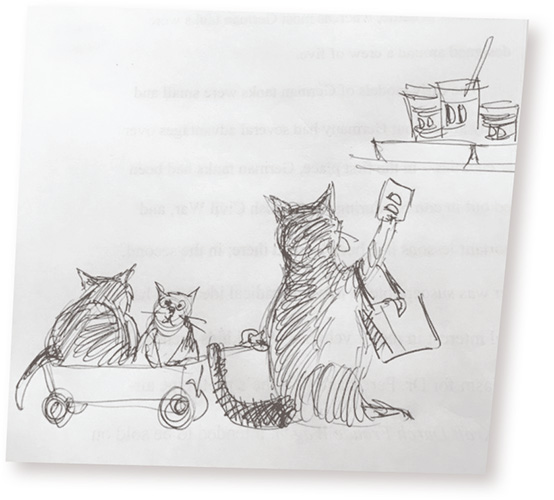
Some mornings I got my inspiration from The New York Times or the Poughkeepsie Journal, each of which was usually in the tack room next to the scrap paper, other days from some incident around the farm, still others I had to stare at a blank sheet of paper waiting for some idea to come to mind as I sipped my coffee. Many of the drawings revolve around regular events in Dutchess County, New York, where we live. The annual Dutchess County Fair in Rhinebeck is one of them, Millbrook Farmers Market another, Pleasant Valley Day, in our hometown, still another. Some of them reflect the weather in our part of the countrywinter brings big snow storms, and with them the longing of everyone who can afford it to get away to the south, lie in the sun and read about the snow in the newspaper while sipping a daiquiri by the pool; summer brings heat, humidity and bugs. Others were inspired by big events like the marathon or the presidential campaign (the cats were not early supporters of Donald Trump). Every once in a while I included a horse, particularly Monty, my favorite among our four horses, perhaps because I found them easier to drawhorses have three pronounced gaits: walk, trot and canter; cats either sleep, slouch along or run like hell if they think they are in danger.


Once I had finished a drawing, I photographed it with my cell phone and emailed it to Margaret. Far from imagining that they might one day be published, I made no effort to save the originals and was not even aware that Margaret was forwarding them to a long list of her friends until one of them mentioned over dinner that she had particularly liked yesterdays drawing. This caused me some surprise. If I had known they were going out to a dozen or more people every day I might have drawn them more carefully, but that too would probably have spoiled the spontaneity. I decided not to ask who was receiving them, since the object was to amuse Margaret. If she wanted to show them to her friends it was no business of mine, and it was not until later that I realized how proud she was of me, or how much she enjoyed sharing them.

Animals are on the whole easier to draw than peoplethey cant complain that youve made them look too fat or silly for one thingso human figures dont often appear in these drawings, although I have tried to respect the dignity of the cats. Our cats dislike being made fun of, and when they make a mistake like leaping for a tabletop and missing it, they have an altogether human way of pretending that the incident never happened. My cast of cat characters changed slightly with time. George, a large orange cat who was Margarets favorite, and unlike most cats was something of a clown, died early on, leaving only Ruby, the shyest of our cats, and Kit Kat, the boldest, in the house, while Tiz Whiz lived in the tack room, with an occasional cat visitor from the woods since she had a plastic pet door. They were all adopted cats which had come in from the woods, nervously nibbled at a plate of food and eventually stayedto paraphrase Caesar, they came, they saw, they conquered.
